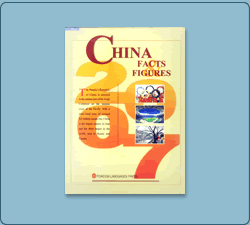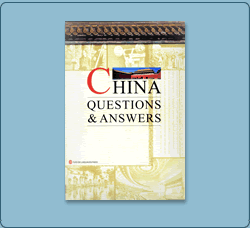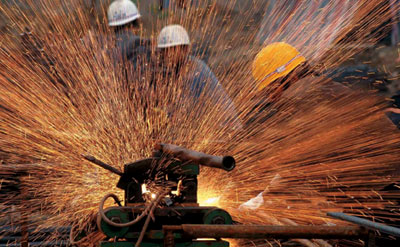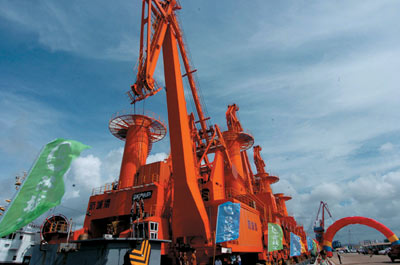 |
 |
 |
 |
 |
| Diverse Economic Elements | ||
|
Before 1978, state-owned and collectively-owned enterprises represented 77.6 percent and 22.4 percent respectively of China's exclusively public-ownership economy. The policy of reform and opening-up has given wide scope to the common development of various economic sectors. Self-employed businesses and private industrial enterprises and enterprises with foreign, Hong Kong, Macao or Taiwan funding have mushroomed. Reform of state-owned enterprises has always been the key link of China's economic restructuring. By now almost all state-owned enterprises have adopted the corporate governance system. Their impact in terms of control, influence and lead in the overall national economy has been constantly increasing. In 2006, of the industrial added value created by all state-owned industrial enterprises and non-state industrial enterprises with annual sales revenue exceeding five million yuan, state-owned and state stock-holding enterprises accounted for 35.6 percent, collectively-owned enterprises 3.2 percent, the rest taken up by other non-public enterprises, including enterprises with foreign, Hong Kong, Macao or Taiwan investments, and self-employed businesses and private enterprises. The result is a dynamic juxtaposition of multifarious economic elements. In 2006, of the Chinese enterprises ranking in the world's top 500, the 19 China's mainland enterprises were all state-owned. Of China's own top 500 enterprises, the majority were state-owned and state stock-holding enterprises, the main force of the Chinese economy, with business revenue amounting to 77.6 percent of GDP. Non-state enterprises have become the main driving force for industrial sectors, the non-state economy accounting for 50 percent in 27 of the 40 industrial sectors, more than 70 percent in some sectors.
Hard at work on construction of the first phase of the Chengdu Subway Line 1; work began in late 2005, aiming at a trial run in 2010
Start of West Bay Sea-route Project, Fangchenggang Port, Guangxi |
| Copyright ? China.org.cn. All Rights Reserved E-mail: webmaster@china.org.cn |

